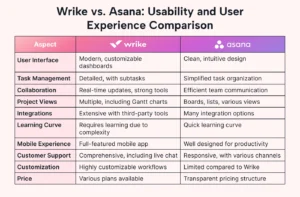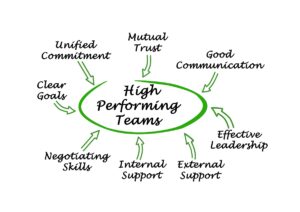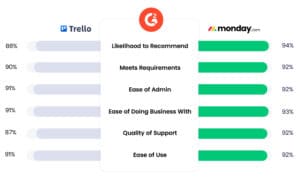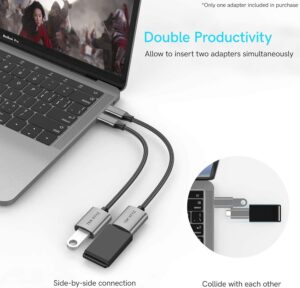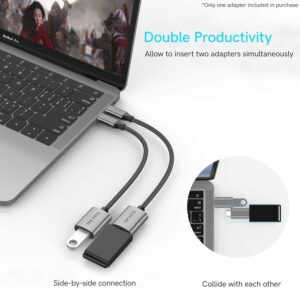Maximize Efficiency with Time Tracking for Teams
In today’s fast-paced business environment, managing time efficiently is crucial to improving team productivity and achieving project deadlines. Time tracking tools have become essential for organizations aiming to optimize team performance, monitor project costs, and ensure accountability. This guide introduces effective time tracking strategies and the best tools to help your team stay on track and succeed.
Introduction: Why Time Tracking Matters for Teams
Time is one of the most valuable resources in any organization. Without proper management, teams risk overworking, missed deadlines, and even budget overruns. Time tracking is more than just logging hours; it offers insights into how time is spent on projects, task prioritization, and employee productivity. By using effective time tracking strategies, teams can work smarter, reduce inefficiencies, and meet project goals.
Key Benefits of Time Tracking for Teams
1. Improves Accountability
Tracking time makes team members more accountable for their work. It creates transparency, allowing managers and employees alike to understand how work hours are allocated. When everyone tracks their time, it helps ensure that deadlines are met, tasks are properly delegated, and work is balanced across the team.
- Tip: Use project management tools like Asana or Monday.com with built-in time tracking features to streamline the accountability process.
2. Boosts Productivity
When teams know their time is being tracked, they tend to be more productive. Time tracking can identify bottlenecks in workflow, helping teams optimize how they manage tasks. Knowing how much time is required for each task can also enhance focus and reduce distractions.
- Tip: Implement regular check-ins and reviews of tracked time to evaluate and improve work processes.
3. Enhances Project Cost Management
For project-based businesses, tracking time is essential to monitor project costs. With accurate time logs, businesses can analyze how much time (and therefore cost) is spent on specific projects, helping managers stay within budget and ensuring that billable hours are properly recorded.
- Tip: Use tools like Harvest or Clockify to manage project time and costs with invoicing features for billable hours.
4. Improves Work-Life Balance
Time tracking helps teams understand where they might be spending too much time, leading to burnout. By visualizing how work hours are distributed, teams can find areas to improve work-life balance and avoid overworking employees.
- Tip: Regularly review time data to ensure workloads are balanced and employees are not overextended.
5. Provides Accurate Data for Reporting
Having a clear record of how time is spent allows for accurate reporting on projects, employee performance, and task completion. This information is crucial for making informed business decisions and improving overall efficiency.
- Tip: CRM systems like Zoho CRM and Salesforce integrate time tracking to provide detailed reporting for both internal review and client billing.
Best Practices for Time Tracking in Teams
1. Choose the Right Tool
Choosing the right time tracking software depends on your team’s specific needs. Some tools are better suited for project management, while others focus on employee attendance. Look for tools that integrate seamlessly with your existing workflow and project management systems.
- Tip: Tools like Toggl or Hubstaff are great for teams that need simple, user-friendly time tracking solutions with powerful integrations.
2. Set Clear Expectations
For time tracking to be effective, set clear expectations with your team about why time tracking is being implemented and how it will benefit everyone. Make sure to explain how to log hours, what types of tasks need to be tracked, and any goals related to efficiency.
- Tip: Provide training and resources to ensure that everyone understands how to use the time tracking tool effectively.
3. Track Time in Real-Time
The most accurate time tracking happens when team members log their time as they work, rather than retroactively entering data at the end of the day or week. Real-time tracking ensures more accurate data and reduces the risk of forgotten tasks.
- Tip: Encourage team members to use automatic time tracking features offered by many tools, such as Clockify’s desktop tracker, to log time effortlessly.
4. Review and Analyze Data Regularly
Simply tracking time isn’t enough—regularly reviewing and analyzing time data is key to improving productivity. Look for trends in how time is being spent and make necessary adjustments to processes or workloads.
- Tip: Schedule weekly or monthly team meetings to review time tracking reports and identify opportunities for improvement.
5. Integrate Time Tracking with Project Management
Time tracking shouldn’t happen in isolation—it should be integrated with your project management systems for maximum effectiveness. Linking time tracking with task and project management tools ensures you have a complete overview of project progress and team productivity.
- Tip: Many tools like Monday.com or ClickUp offer built-in time tracking features, simplifying the process of managing both tasks and time in one place.
Top Tools to Simplify and Scale Your Time Tracking
- Toggl: A popular time tracking tool offering a simple interface and powerful integrations with project management systems. Toggl allows real-time tracking and detailed reporting for teams of all sizes.
- Clockify: A free time tracking tool that enables teams to track billable hours, manage project costs, and produce time reports for invoicing.
- Hubstaff: Hubstaff offers advanced time tracking with GPS and employee monitoring, making it perfect for remote teams managing multiple projects and deadlines.
- Harvest: A robust tool designed for tracking time, project management, and invoicing. It’s ideal for teams that need to manage both time and costs simultaneously.
- Asana: A project management tool with integrated time tracking features, allowing teams to track tasks, monitor workloads, and optimize efficiency.
- Monday.com: Another powerful project management platform that includes built-in time tracking for teams, helping managers keep track of project timelines and resource allocation.
Conclusion: Implement Time Tracking to Unlock Team Potential
Time tracking is an invaluable tool for teams looking to optimize their work processes, manage project costs, and improve overall productivity. When used effectively, time tracking can help managers gain insights into team performance, make better business decisions, and ensure that employees maintain a healthy work-life balance. By integrating the right time tracking tool with your workflow, you can streamline operations and maximize team success.
FAQs
What is time tracking, and why is it important?
Time tracking involves logging work hours spent on tasks or projects. It helps teams improve productivity, accountability, and project cost management while preventing burnout.
How can time tracking help manage project costs?
Time tracking allows you to measure the time spent on each task and project, ensuring accurate billing for clients and enabling managers to stay within budget.
What are the best time tracking tools for teams?
Popular time tracking tools for teams include Toggl, Clockify, Harvest, Hubstaff, Asana, and Monday.com, all of which offer features like real-time tracking and reporting.
Should remote teams use time tracking tools?
Yes, time tracking is especially useful for remote teams to monitor productivity, manage workloads, and ensure projects stay on schedule without micromanaging.
How do I choose the best time tracking tool for my team?
When choosing a tool, consider your team’s size, the type of projects you manage, and whether the tool integrates with your existing project management and invoicing systems.
Keywords: time tracking, team productivity, project management, time tracking tools, manage project costs, improve accountability, remote teams

